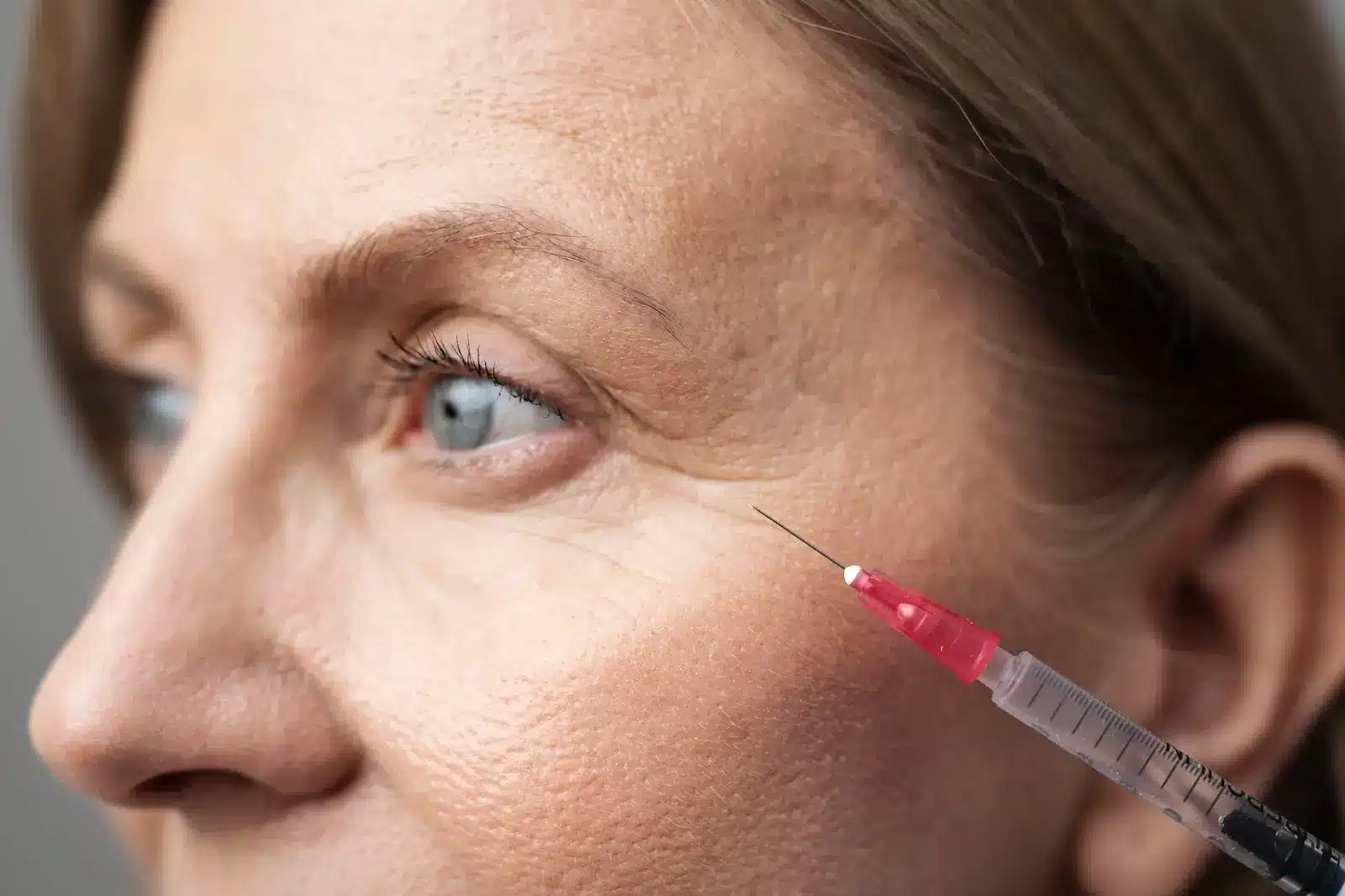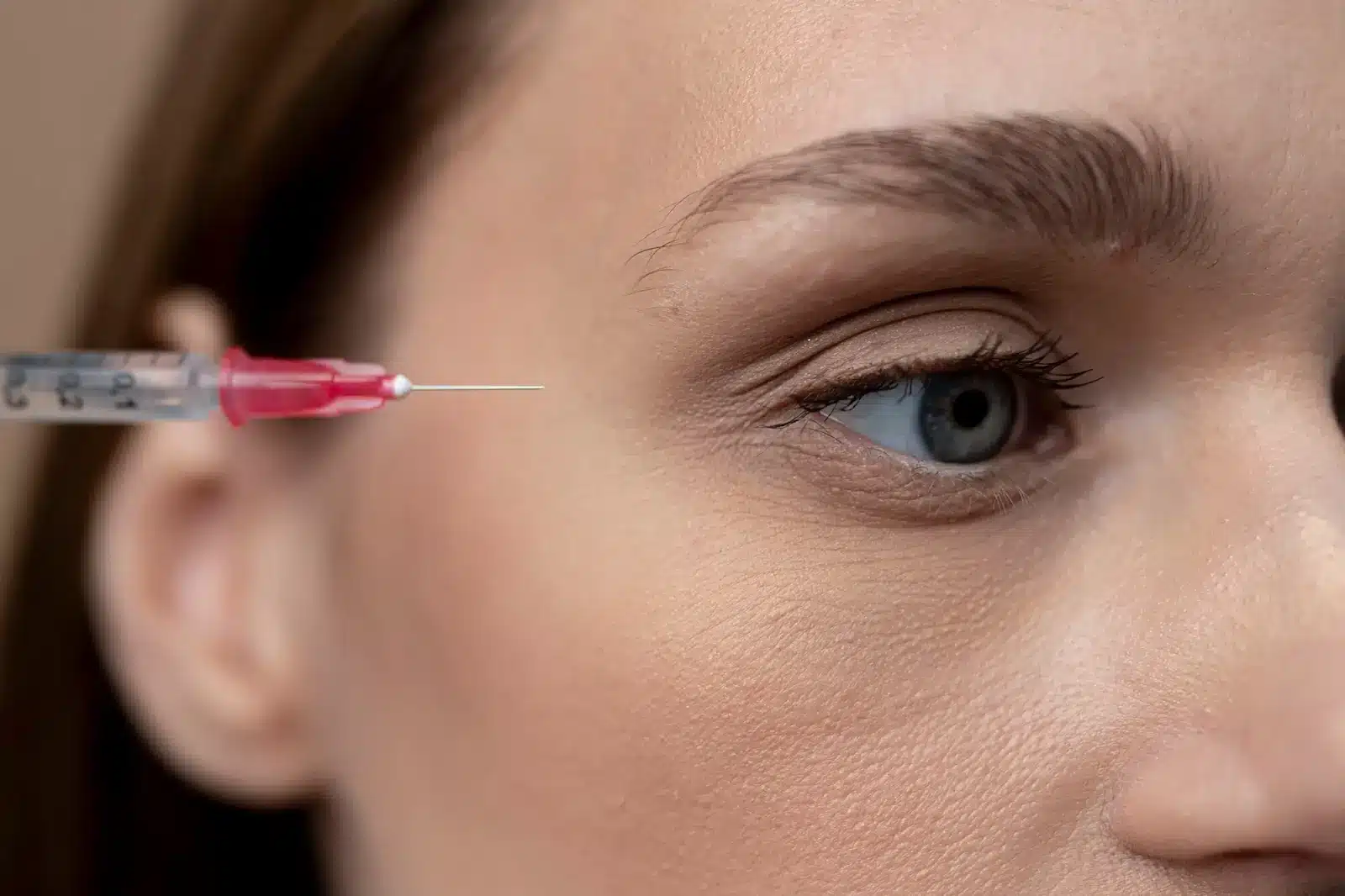
Wet age-related macular degeneration (AMD) is one of the leading causes of vision loss in adults over 50. Although it accounts for only about 10% of all AMD cases, wet AMD is responsible for roughly 90% of severe vision loss. Early diagnosis and appropriate treatments like anti-VEGF (vascular endothelial growth factor are crucial to slowing the disease’s progression and helping patients preserve as much vision as possible.
Among these therapies, Eylea and Avastin stand out as two widely used treatments. Both target VEGF to reduce abnormal blood vessel growth in the eye. Despite this shared mechanism, they differ in formulation, cost, efficacy, and treatment protocols—differences that affect both patient choices and practitioner recommendations.
This article compares Eylea and Avastin, focusing on their effectiveness, safety, cost, and overall suitability for managing wet AMD.
Key Takeaways
- Both treatments improve vision, but Eylea often allows for longer intervals between injections (8-12 weeks versus Avastin’s 4 weeks), which may be more convenient for patients.
- Common side effects for both include mild eye pain and temporary vision changes. Eylea may carry a higher risk of inflammation, while Avastin has slightly elevated risks of systemic complications like stroke.
- Eylea suits patients who prefer fewer injections and seek an FDA-approved option. Avastin appeals to those seeking affordable treatment who can tolerate more frequent injections.
- To ensure optimal outcomes, the choice between Eylea and Avastin should be based on individual patient needs, financial situations, and ophthalmologists’ recommendations.
- Both treatments are effective but differ in cost, dosing, and risk profiles. Personalized care is crucial for preserving long-term vision and ensuring patient satisfaction.
About: Doctor Medica is your trusted supplier of top-quality dermal fillers, viscosupplements, and more for your medical practice. We offer genuine products from leading brands at the lowest prices. Contact Doctor Medica today to order Eylea online for your practice.
Mechanisms of Action

Both Eylea (aflibercept) and Avastin (bevacizumab) work by inhibiting VEGF, the protein behind abnormal blood vessel growth and fluid leakage in the retina. Despite their shared target, each drug takes a slightly different approach:
- Eylea is a fusion protein crafted specifically for eye health, binding both VEGF-A and VEGF-B with high affinity. This dual action can lead to a longer-lasting effect and, for some patients, fewer injections over time.
- Avastin, initially developed to combat certain types of cancer, focuses on VEGF-A alone. Though originally intended for oncology, it’s widely used “off-label” for wet AMD and has proven effective at reducing unwanted fluid buildup and bleeding.
In essence, both medications curb the effects of VEGF. However, Eylea’s tailored design often provides a more prolonged suppression, making it a convenient choice for individuals aiming to limit frequent injections.
Efficacy in Clinical Trials
Both Eylea (aflibercept) and Avastin (bevacizumab) target VEGF to manage wet age-related macular degeneration (AMD) and diabetic macular edema (DME). Multiple studies show they can improve vision, though they differ in durability, treatment intervals, and patient suitability.
On Eylea (Aflibercept)
- VIEW 1 and VIEW 2 Studies: An integrated analysis of the two-year results from the VIEW 1 and VIEW 2 studies demonstrated that patients receiving Eylea (2 mg every 8 weeks) gained an average of +7.6 letters from baseline at week 96, compared to +8.4 letters at week 52. These patients received an average of 11.2 injections over two years.
- Comparison with Lucentis: A clinical trial directly compared Eylea and Lucentis (ranibizumab) for treating wet AMD and found them to be similarly effective. Another trial focusing on DME found that Eylea was more likely to improve vision than Lucentis in patients with more severe vision loss.
- Weaning off Treatment: A retrospective study analyzing patients who were weaned off wet AMD therapy found that patients in the Eylea arm were three times more likely to be weaned off treatment compared to those receiving Avastin (43% vs. 15%). This benefit persisted through two years (52% vs. 27%), suggesting a potentially longer-lasting effect with Eylea.
On Avastin (Bevacizumab)
- CATT Trial: The Comparison of AMD Treatments Trials (CATT) found that Avastin and Lucentis provided comparable visual acuity improvements at one and two years. This landmark study supported the use of Avastin as a cost-effective alternative to Lucentis for wet AMD.
- Outperformance in DME: An NIH-funded clinical trial comparing Eylea, Avastin, and Lucentis for DME found that Eylea outperformed Avastin in patients with 20/50 or worse vision at the start of the trial. After two years, visual acuity improved substantially in all three groups, but Eylea showed a clear advantage over Avastin in this specific patient population.
- Injection Frequency: Patients in the Avastin (bevacizumab) group received more injections on average (8.7 ± 0.3) compared with the Eylea arm (7.2 ± 0.3)
Safety Profiles and Side Effects

When weighing Eylea against Avastin, it’s crucial to consider both immediate and long-term side effects of Eylea injections. Although the two treatments share several common side effects, each drug’s safety profile also has distinct nuances.
Common Side Effects (Both Drugs)
- Mild eye pain or irritation
- Temporary vision changes
- Increased intraocular pressure
Specific Risks
- Eylea: May carry a slightly higher risk of inflammation inside the eye, yet it tends to have fewer systemic side effects overall. If you have concerns about the long-term side effects of Eylea injections, be sure to discuss them with your doctor.
Avastin: Used “off-label” for eye conditions, it can pose a marginally higher risk of systemic complications (e.g., stroke, heart attack) in susceptible patients.
Cost Considerations and Accessibility
When choosing between Eylea and Avastin, cost often plays a pivotal role, as their prices can vary dramatically.
- Eylea: Known for its specialized formulation and official FDA approval for eye diseases, Eylea typically comes with a higher price tag. Even if covered by insurance, out-of-pocket costs can still add up.
- Avastin: Originally developed for cancer treatment, Avastin is repurposed for wet AMD, making it significantly more affordable. Though it’s used “off-label,” its cost-effectiveness has led many clinics to adopt it as a first-line option.
As a result, patients without comprehensive insurance coverage often favor Avastin, while those seeking fewer total visits or who have comprehensive insurance may lean toward Eylea, even at a higher price.
Patient Selection and Personalized Treatment
The choice between Eylea and Avastin often comes down to each patient’s specific needs and guidance from their ophthalmologist. Both drugs have distinct advantages, so personalized care is vital to achieving the best possible outcomes.
- Eylea suits patients who benefit from fewer injections—such as those with limited mobility—or those who have not responded well to Avastin. It’s also preferred by individuals wanting an FDA-approved treatment specifically designed for wet AMD.
- Avastin is a practical choice for those seeking a cost-effective option or who have previously used off-label treatments without complications. It may also fit individuals who can tolerate more frequent injections without significant inconvenience.
By considering factors like medical history, lifestyle, and financial situation, ophthalmologists can recommend a treatment plan that preserves long-term vision and ensures patient satisfaction.
Conclusion
Both Eylea and Avastin effectively treat wet AMD, yet they differ in cost, dosing schedules, and specific risks. Eylea provides extended intervals between injections and has full FDA approval for AMD, while Avastin offers a more budget-friendly option with similar efficacy.
Ultimately, the best choice depends on individual medical needs, financial considerations, and close collaboration between patients and their healthcare providers.
FAQs
1. Is Eylea better than Avastin for wet AMD?
Both Eylea and Avastin effectively treat wet AMD. Eylea may offer longer-lasting effects with fewer injections, while Avastin is a more affordable off-label option.
2. How do Eylea and Avastin differ in their mechanisms?
Eylea is a targeted fusion protein that binds multiple VEGF forms, offering more prolonged suppression. Avastin blocks VEGF-A and is adapted from cancer treatment.
3. Which treatment has more side effects: Eylea or Avastin?
Both have similar local side effects. Avastin may pose a slightly higher risk of systemic events like stroke due to its off-label use.
4. How do costs compare between Eylea and Avastin?
Eylea is significantly more expensive but FDA-approved for AMD. Avastin is more affordable but used off-label. Insurance coverage may vary.
References
American Academy of Ophthalmology. Eye Health Statistics. American Academy of Ophthalmology. Accessed March 20, 2025. https://www.aao.org/newsroom/eye-health-statistics..
American Academy of Ophthalmology. Eye Disease Statistics. American Academy of Ophthalmology. Accessed March 20, 2025. https://www.aao.org/education/eye-disease-statistics..
Related Articles
Joanna Carr
Eylea Manufacturer – About Regeneron Pharmaceuticals
Learn about Regeneron Pharmaceuticals, the innovative biotech company behind Eylea. Discover their history, groundbreaking research, and commitment to...
Joanna Carr
Bellast Filler Product Line – A Comprehensive List
Explore the complete Bellast Filler product line in this comprehensive guide. Learn about each product's unique features, uses, and benefits for your ...
Joanna Carr
Lumigan Mechanism of Action – How Lumigan Works to Reduce Intraocular Pressure
Explore the mechanism of action of Lumigan and how it effectively reduces intraocular pressure. Understand the science behind its use in treating glau...


